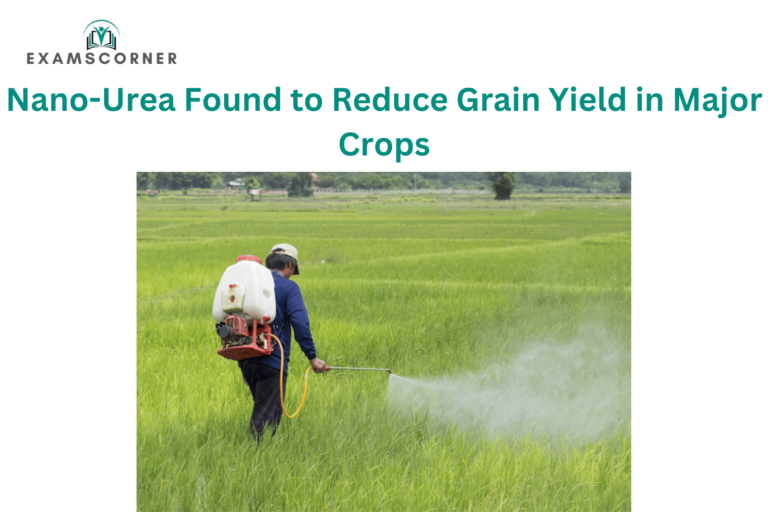A groundbreaking study by scientists at Punjab Agricultural University (PAU), Ludhiana, has raised serious concerns about the effectiveness of nano-urea as a substitute for conventional urea in Indian agriculture. The study, published in the peer-reviewed journal Plant Soil, revealed that the use of Nano-Urea Found to Reduce Grain Yield and protein content in paddy and wheat grains—two crops that account for 70% of India’s annual food grain production.
Key Findings
- Reduction in Grain Protein Content: The study showed a 35% reduction in protein content in rice grains and a 24% reduction in wheat grains when nano-urea was used as prescribed.
- Yield Losses: Trials conducted over two years (2021-2022) indicated that plants treated with nano-urea struggled to absorb nitrogen effectively, resulting in lower yields.
- Root Health Impact: The research also observed a decline in root attributes such as length, dry weight, and nutrient uptake, further impacting crop performance.
What is Nano-Urea?
Nano-urea, a liquid fertilizer developed and promoted by the Indian Farmers Fertiliser Cooperative (IFFCO), was introduced as a technological innovation to reduce India’s dependence on conventional urea. It is marketed as a bioavailable nitrogen solution that can be sprayed on plant leaves to substitute conventional urea.
A 500-ml bottle of nano-urea, priced at ₹260, is claimed by IFFCO to replace one 45-kg bag of conventional urea, which costs ₹242 after government subsidies. Nano-urea contains 4% nitrogen (20 grams) and is applied at critical flowering stages of crops. Unlike conventional urea, which is applied to the soil, nano-urea is directly sprayed on leaves, which supposedly enhances nitrogen absorption.
Concerns Raised by the Study
Despite its promising claims, the PAU study concluded that the benefits of nano-urea have been overstated:
- Inability to Replace Conventional Urea: The plants primarily absorbed nitrogen from the soil, as they were unable to utilize the nitrogen in nano-urea effectively.
- Premature Adoption: Researchers cautioned against the premature and long-term adoption of nano-urea, warning of economic and agricultural consequences, including reduced yields and nitrogen content in crops.
- Inconsistent Evidence: While IFFCO-funded trials have previously reported positive results, independent studies have presented mixed findings, underscoring the need for further research.
Economic and Agricultural Implications
India’s agricultural economy relies heavily on urea, with an annual demand of 350 lakh tonnes, including 40 lakh tonnes imported. Urea is heavily subsidized by the government, with ₹1.3 lakh crore spent on subsidies in 2023-24. Nano-urea was introduced to reduce overall urea consumption and cut down the import bill.
However, the PAU study suggests that reliance on nano-urea without robust evidence of its efficacy could harm farmers’ livelihoods and agricultural productivity.
Future Directions
While newer formulations of nano-urea with higher nitrogen content (8% N and 20% N) are being tested, they have yet to demonstrate significant yield improvements, according to PAU researchers. Professor Rajeev Sikka, who led the study, emphasized the need for careful and long-term trials to fully understand the impact of nano-urea on crop growth and soil health.
Conclusion
The findings from Punjab Agricultural University cast doubts on the viability of nano-urea as a substitute for conventional urea in India’s agriculture. While its potential to reduce fertilizer costs and environmental impact is appealing, its adverse effects on crop yields and protein content (Nano-Urea Found to Reduce Grain Yield) highlight the need for more research before widespread adoption. Farmers and policymakers must tread cautiously to ensure that agricultural innovations align with the economic and food security needs of the country.



